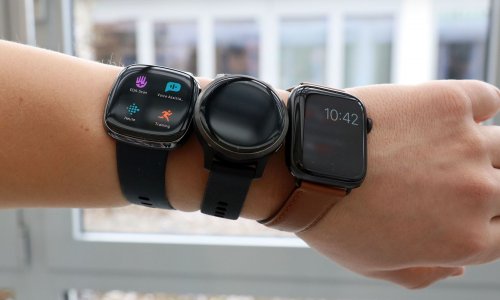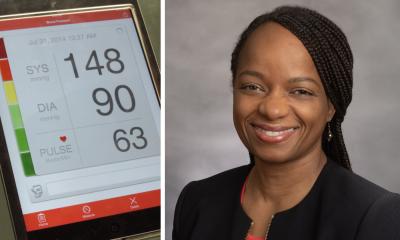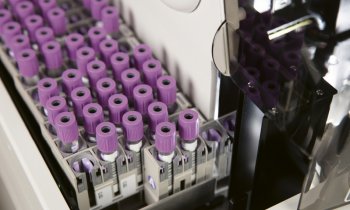Video • Wearable for blood pressure, heart rate, glucose and more
New patch monitors multiple markers at once
Engineers at the University of California San Diego have developed a soft, stretchy skin patch that can be worn on the neck to continuously track blood pressure and heart rate while measuring the wearer’s levels of glucose as well as lactate, alcohol or caffeine.
It is the first wearable device that monitors cardiovascular signals and multiple biochemical levels in the human body at the same time. “This type of wearable would be very helpful for people with underlying medical conditions to monitor their own health on a regular basis,” said Lu Yin, a nanoengineering Ph.D. student at UC San Diego and co-first author of the study published in Nature Biomedical Engineering. “It would also serve as a great tool for remote patient monitoring, especially during the Covid-19 pandemic when people are minimizing in-person visits to the clinic.”
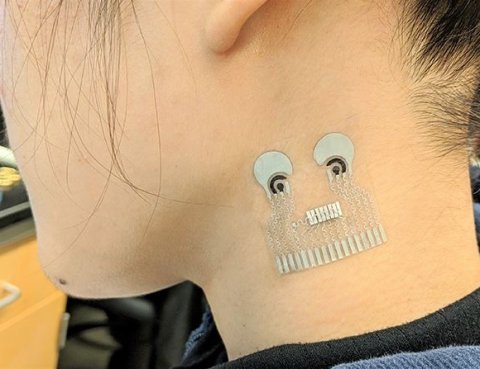
Such a device could benefit individuals managing high blood pressure and diabetes—individuals who are also at high risk of becoming seriously ill with Covid-19. It could also be used to detect the onset of sepsis, which is characterized by a sudden drop in blood pressure accompanied by a rapid rise in lactate level.
One soft skin patch that can do it all would also offer a convenient alternative for patients in intensive care units, including infants in the NICU, who need continuous monitoring of blood pressure and other vital signs. These procedures currently involve inserting catheters deep inside patients’ arteries and tethering patients to multiple hospital monitors. “The novelty here is that we take completely different sensors and merge them together on a single small platform as small as a stamp,” said Joseph Wang, a professor of nanoengineering at UC San Diego and co-corresponding author of the study. “We can collect so much information with this one wearable and do so in a non-invasive way, without causing discomfort or interruptions to daily activity.”
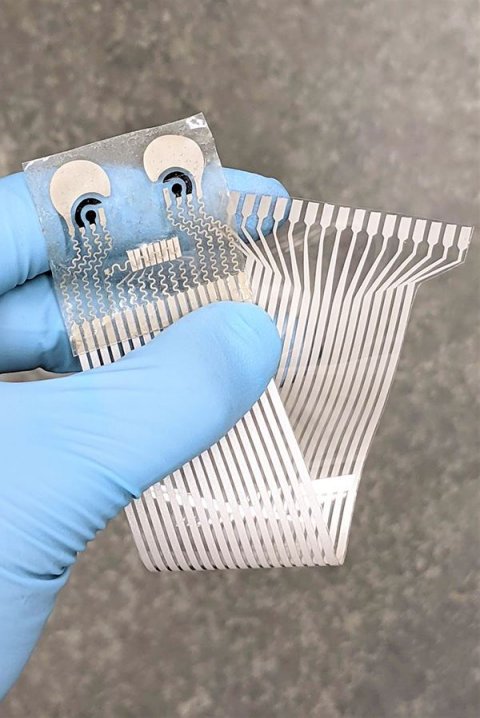
The new patch is a product of two pioneering efforts in the UC San Diego Center for Wearable Sensors, for which Wang serves as director. Wang’s lab has been developing wearables capable of monitoring multiple signals simultaneously—chemical, physical and electrophysiological—in the body. And in the lab of UC San Diego nanoengineering professor Sheng Xu, researchers have been developing soft, stretchy electronic skin patches that can monitor blood pressure deep inside the body. By joining forces, the researchers created the first flexible, stretchable wearable device that combines chemical sensing (glucose, lactate, alcohol and caffeine) with blood pressure monitoring. “Each sensor provides a separate picture of a physical or chemical change. Integrating them all in one wearable patch allows us to stitch those different pictures together to get a more comprehensive overview of what’s going on in our bodies,” said Xu, who is also a co-corresponding author of the study.
The patch is a thin sheet of stretchy polymers that can conform to the skin. It is equipped with a blood pressure sensor and two chemical sensors—one that measures levels of lactate (a biomarker of physical exertion), caffeine and alcohol in sweat, and another that measures glucose levels in interstitial fluid. The patch is capable of measuring three parameters at once, one from each sensor: blood pressure, glucose, and either lactate, alcohol or caffeine. “Theoretically, we can detect all of them at the same time, but that would require a different sensor design,” said Yin, who is also a Ph.D. student in Wang’s lab. The blood pressure sensor sits near the center of the patch. It consists of a set of small ultrasound transducers that are welded to the patch by a conductive ink. A voltage applied to the transducers causes them to send ultrasound waves into the body. When the ultrasound waves bounce off an artery, the sensor detects the echoes and translates the signals into a blood pressure reading.
Let’s say you are monitoring your blood pressure, and you see spikes during the day and think that something is wrong. But a biomarker reading could tell you if those spikes were due to an intake of alcohol or caffeine
Juliane Sempionatto
The chemical sensors are two electrodes that are screen printed on the patch from conductive ink. The electrode that senses lactate, caffeine and alcohol is printed on the right side of the patch; it works by releasing a drug called pilocarpine into the skin to induce sweat and detecting the chemical substances in the sweat. The other electrode, which senses glucose, is printed on the left side; it works by passing a mild electrical current through the skin to release interstitial fluid and measuring the glucose in that fluid.
The researchers were interested in measuring these particular biomarkers because they impact blood pressure. “We chose parameters that would give us a more accurate, more reliable blood pressure measurement,” said co-first author Juliane Sempionatto, a nanoengineering Ph.D. student in Wang’s lab. “Let’s say you are monitoring your blood pressure, and you see spikes during the day and think that something is wrong. But a biomarker reading could tell you if those spikes were due to an intake of alcohol or caffeine. This combination of sensors can give you that type of information,” she said.
Source: University of California San Diego
19.02.2021




